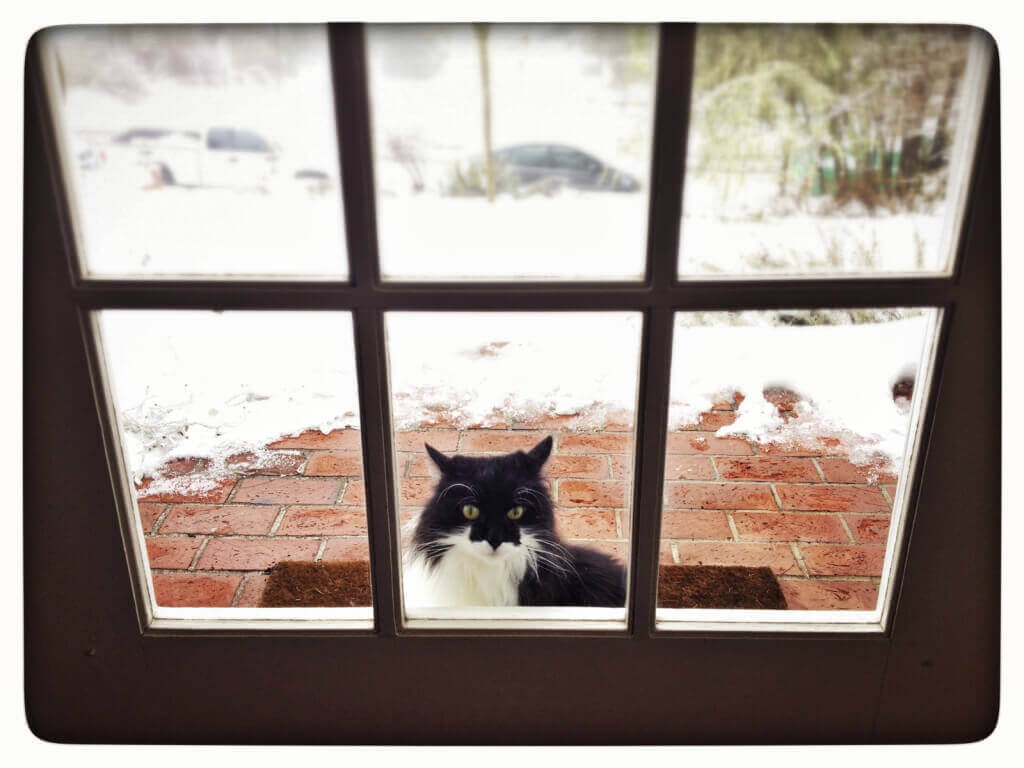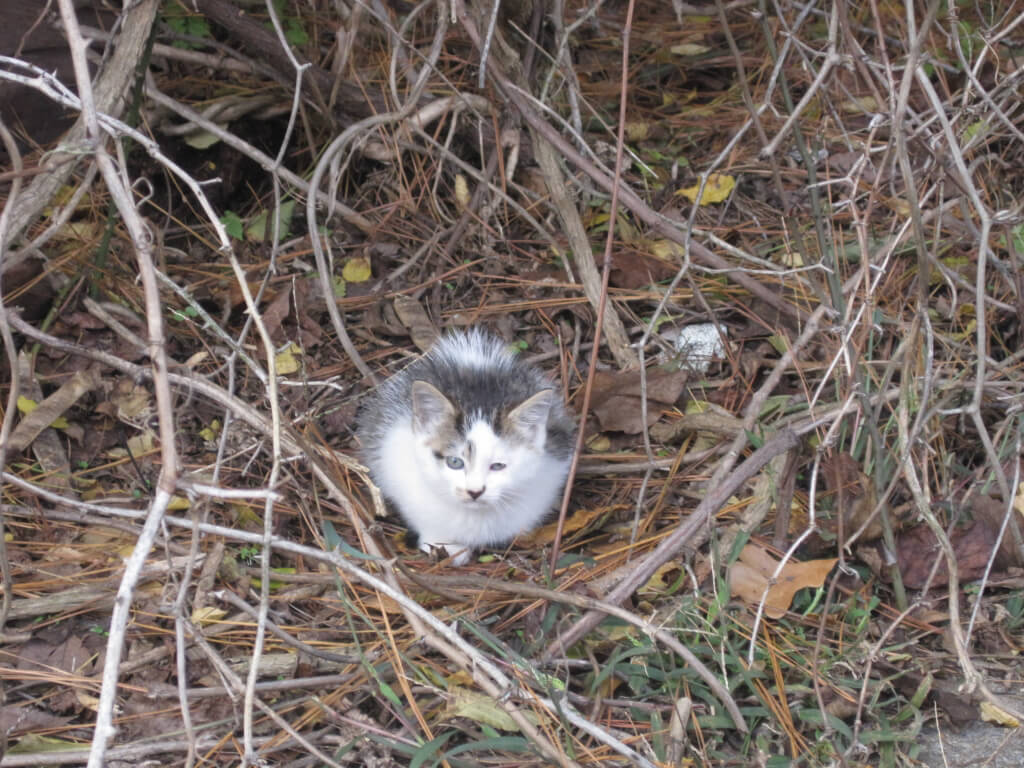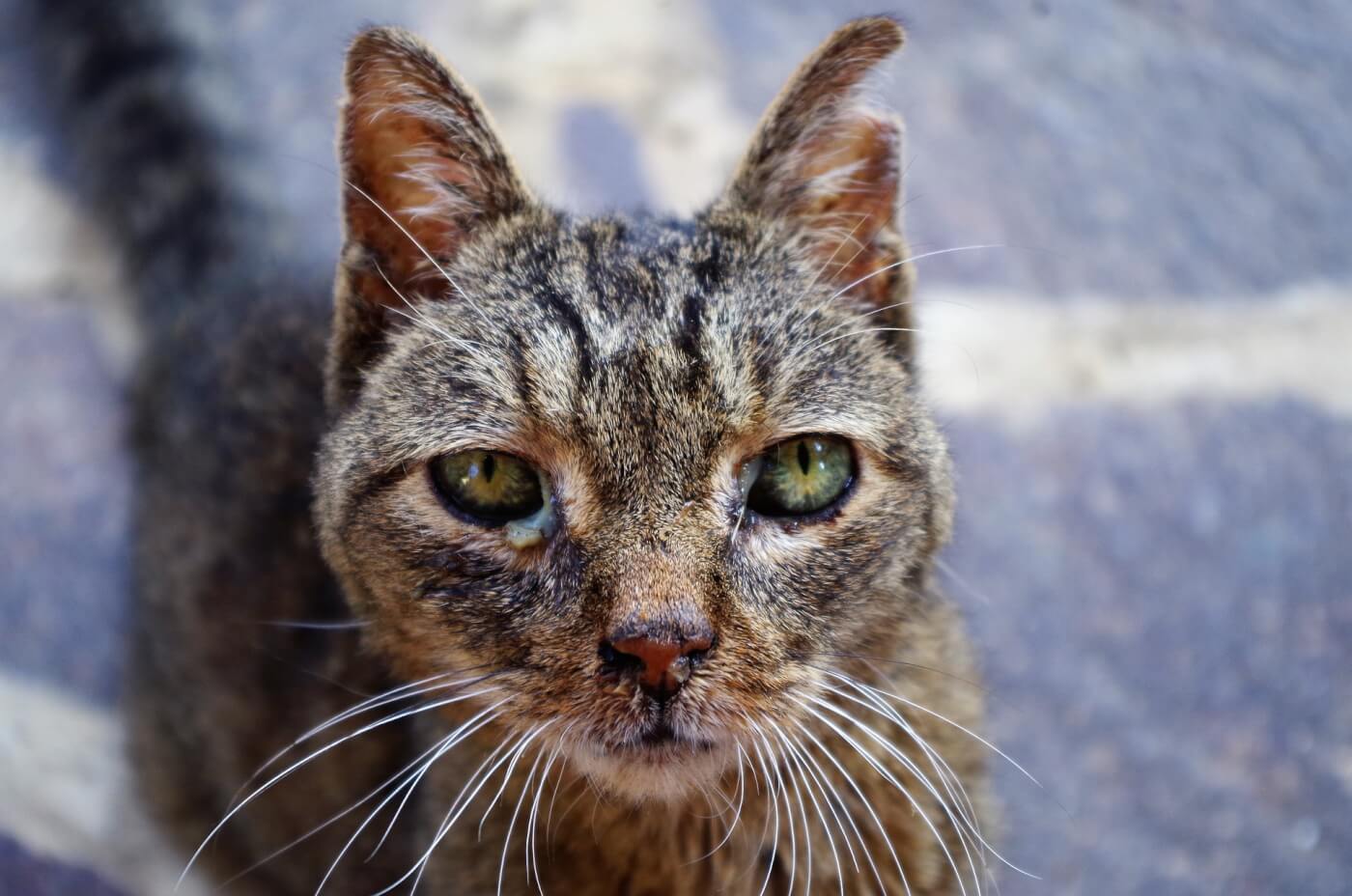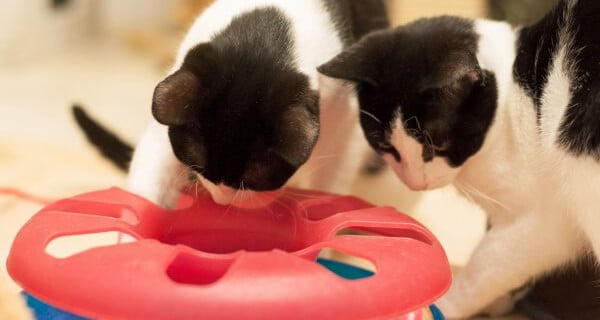When the stray cat first appeared on the porch, he had long silky fur. I started feeding him and earning his trust. But as the months passed, he got bitten by other cats. He developed enormous abscesses that refused to heal. His coat grew dull.

Finally, I gained his confidence enough to lure him into a carrier with food and whisk him off to a vet. Sadly, the big, once-handsome cat tested positive for FIV, the feline equivalent of AIDS. Already, the disease had ravaged his teeth and gums. Most of his teeth had fallen out. His gums were flaming red. Eating must have been agony. The disease also damaged his heart. An infection had also spread from his gums, causing irreparable harm.
It was all over. The injection was painless—but not for me. Now I know better.
The Not-So-Great Outdoors
Feline AIDS is a highly contagious, incurable disease for which there is no vaccine. It can only be prevented by keeping cats indoors. It is one of several deadly diseases that cats who roam outdoors can catch. Unattended cats also face dangers posed by dogs, wildlife, and the scariest predator of all, humans.

Thieves, or “bunchers,” cruise neighborhoods for friendly dogs and cats who can easily be picked up and sold to dealers, who in turn sell them to laboratories. Cats are often poisoned, shot, set on fire, or trapped and drowned by intolerant neighbors or bored juveniles. They are hit by cars, accidentally poisoned by spilled antifreeze, or maimed by fan blades when they crawl into warm engines on winter days.
“But he wants to go outside.” “We live on a very quiet street.” “It’s cruel to keep her in.” These are things said by people who would never dream of opening the door and sending toddlers to wander down the street on their own.
The way we learn not to let the cat out unaccompanied is usually the hard way. In Pompano, Florida, lost dogs and cats were found in a large storage warehouse used by dogfight “trainers.” In South Dakota, a fur trader was caught selling cat skins. In Washington, D.C., a cat let out for her daily stroll returned covered in burns from hot cooking grease. In California, a woman searching for her cats found that both had been shot with arrows.
Today’s concrete jungles are far too dangerous for vulnerable, trusting little animals. But how do we prevent Tabby from getting bored in the great indoors? Here’s how!
Six Steps to Having a Happy Housecat
1. Bring joy with toys.
From paper bags and rolled up balls of paper to motorized “mice” and laser pointers, toys perk up even the laziest feline. All-time favorites are Cat Dancer and Cat Charmer.
2. Scratch that itch.
Cats love to scratch. Doing so enables them to remove broken claws, stretch muscles, and mark “territory.” The best way to save your furniture is to provide lots of “approved” places to scratch. Cat “trees” and posts, cardboard scratching boxes, and those ingenious “cat tracks” (a ball in a circular, partially open plastic tunnel surrounding a cardboard scratching pad) are big hits. Sprinkle catnip on them weekly to keep cats interested, and be sure to replace cardboard inserts when they get worn out.
3. Provide a room with a view.
Windows are cat “TV”—a birdbath or feeder placed near a window can provide hours of entertainment. If window sills aren’t wide enough, build or buy a cushioned perch (which are available from pet supply stores and catalogs) to attach to the sill. (For safe window-sill perching, make sure that double-hung windows are propped open to prevent them from falling down on cats, and tuck the cords of blinds up and out of the way so that legs and other body parts don’t get entangled in them.)

4. Porches bring purrs.
A screened-in porch or an enclosure accessible through a window is a great way for your cat to safely commune with nature. KittyWalk Systems makes enclosures in a variety of configurations that can stand alone or be attached to a cat door. If your yard is fenced, another option is Cat Fence-In, a netting kit that attaches to the top of the fence. No existing fence is necessary to install another escape-proof system called Purrfect Fence, although it is advisable to supplement it with sturdy fencing of some kind to keep dogs and other predators out.
5. Take your cat out for cat walkies.
Cats can be taught to walk on a leash—just be sure to use an ultra-lightweight, retractable leash that’s attached to a harness, not a collar. Let your cat get used to the harness for short periods indoors, and then pick a safe outdoor area to explore. KittyWalk Systems also makes a “pet stroller” that allows for longer, brisker walks and provides a measure of safety from free-roaming dogs.
6. Plant a garden—of catnip.
Cats will nibble on it and roll in it. Other healthy snacks are wheat grass, alfalfa, and oat grass. (You can buy seed starter kits at companion animal supply stores.) You can also find catnip toys at the PETA Store.
For more information about how you can make your feline’s life more felicitous, read PETA President Ingrid E. Newkirk’s book, 250 Vital Things Your Cat Wants You To Know.
As an Amazon Associate, PETA earns from qualifying purchases. If you buy something after clicking the Amazon links on this page, a percentage of the qualifying purchase will be donated to PETA and help us protect more animals from exploitation.









